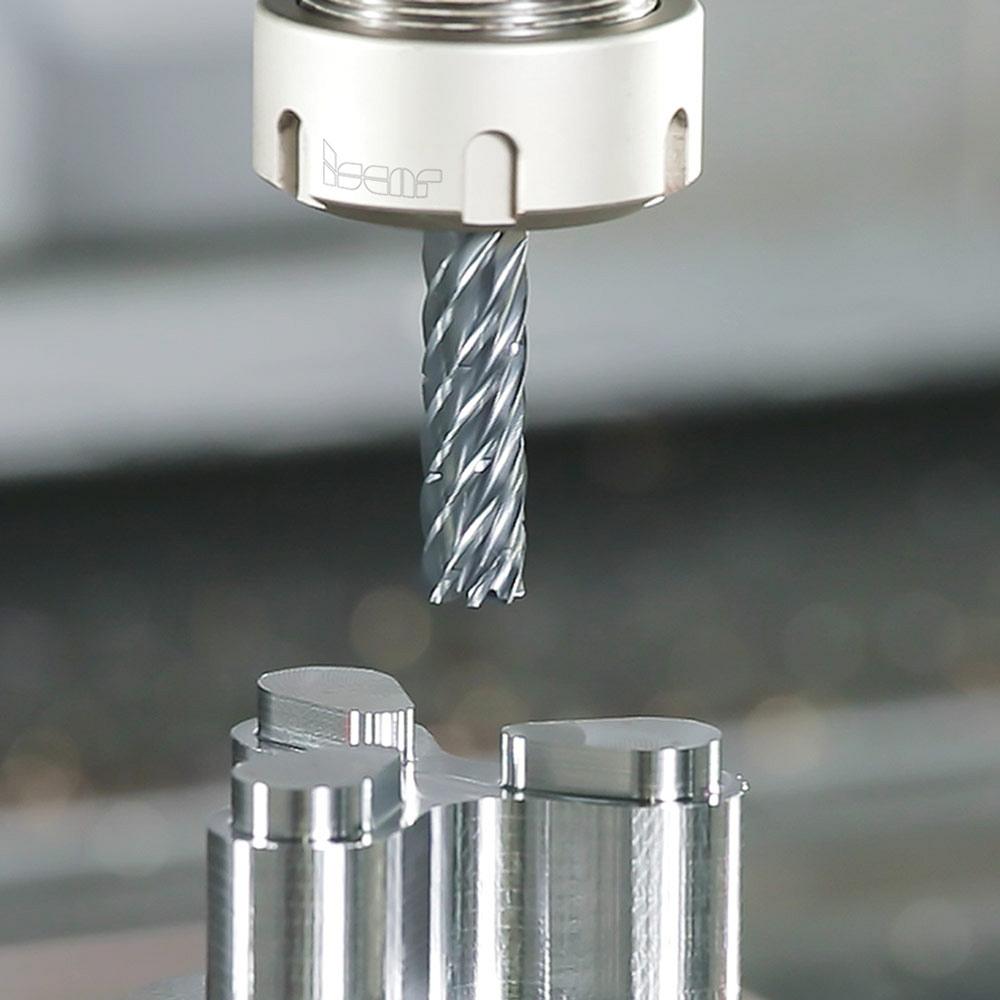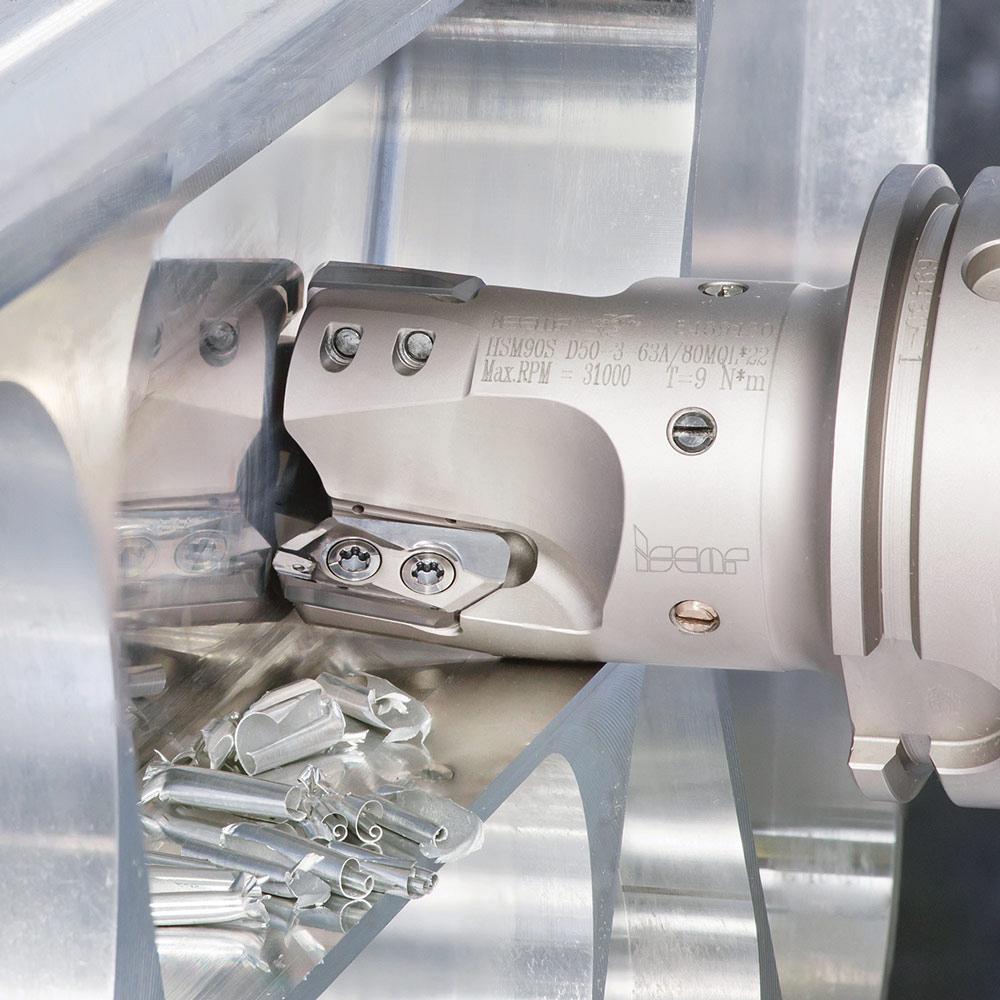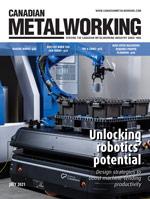Technical Advisor
- FMA
- The Fabricator
- FABTECH
- Canadian Metalworking
High-speed machining requires proper planning
Indexable and solid tools both require secure setups, balancing
- By Andrei Petrilin
- July 26, 2021
- Article
- Cutting Tools
High-speed machining (HSM) has produced awareness about the benefits of using high-speed spindles for enhanced chip removal. These spindles are the most important component of high-speed machine tools and a key factor for the success of HSM.
Operating a spindle with a high rotational speed creates an optimal balance between the enabled speed and the created torque. The spindle’s performance depends on several factors, though. One of the main factors is the design concept: either a single- or combined twin-motor bearing system, seal components, and a tool retention method.
When machining, the spindle is not in direct contact with the workpiece but interacts with it through another technological system – the cutting tool.
This connection acts as a conductor and should transform the high rotational capabilities of the spindle into improved machining results.
Another element affecting the cutting tool and the spindle is the toolholder, which is fitted into the spindle. Poor performance of this small assembly (the cutting tool and toolholder) reduces the functionality of the high-speed spindle. Therefore, in HSM, the accuracy, reliability, and safety of the tool-toolholder assembly are paramount.
Centrifugal Forces Created
High-speed rotation generates high centrifugal forces. In HSM, when compared with traditional machining methods, this force grows exponentially and turns into a significant load on the cutting tool, which affects the tool’s lifespan. During indexable milling, these high centrifugal forces may even cause an insert’s clamping screws to break, inserts to loosen, and cutter bodies to fail. Fragments of these failures not only damage the machine and the part, but they can be very dangerous to the operator as well.
Because of this, cutting tool manufacturers must focus on the tool’s design and manufacture to ensure appropriate reliability of the products. The focus on indexable milling cutters should take into consideration a secure insert mounting method and a robust body structure.
Let us start with a clamping screw, the smallest and weakest element of a tool’s whole technological system. Applying dynamometric keys best controls the tightening of the clamping screw. However, ensuring the torque is tightened sufficiently is not enough to reliably operate the cutter. Intelligent tool design minimizes the dynamic load on the clamping screw.
Well-designed cutters have insert pockets with a protruding ridge on the seat bottom surface and a matching groove on the lower face of the insert. This eliminates insert radial displacement caused by the strong centrifugal forces of HSM and improves load distribution on the insert clamping screw. This cutter design enables reliable milling rotational speed of up to 31,000 RPM.
To reduce centrifugal forces, a cutter body should be axially symmetric and highly balanced. International and national standards and norms specify tool balancing grades.

Iscar's 7-flute solid-carbide end mill, which is intended for HSM, has different helix angles, variable pitch, and chip-splitting grooves on the cutting edges.
Tool Design
When indexable milling tools intended for HSM are designed, it is very important to ensure that the mass distribution of the body is symmetrical with the body axis. This is a theoretical balance in the virtually designed object and doesn’t replace the physical balancing needed in the real tool body.
Tool design engineers try to make indexable cutter bodies, and in particular the insert pocket surface, as hard as possible to improve wear resistance. However, the higher the hardness, the faster the body of a rapidly rotating tool breaks down. Hence, finding an optimal equilibrium between strength and wear is another important task when searching for effective HSM tools.
Solid tools typically create higher accuracy and better axial symmetry when compared with indexable cutters. Solid tools also have smaller diameters, which naturally require higher RPM even for the same cutting speed. This explains why the majority of HSM tools are solid.
Normally these tools are made from coated cemented carbides, although recently cutting ceramics as the tool material has become popular for HSM of high-temperature superalloys. Nevertheless, selecting a solid tool, especially milling cutters for HSM, can be difficult.
This is because the overhang-to-diameter ratio for solid-carbide end mills is greater when compared with indexable tools. This feature, when combined with a flute shape that inherently weakens a tool cross-section, demands that specific attention be paid to the vibration strength of solid-carbide end mills.
To improve chatter stability, tool engineers often make tooth angular pitch unequal and make the flute helix variable. Because this violates the principle of axial symmetry, it may give a result that is the reverse of what is expected. Therefore, an optimal, intelligent design for solid-carbide end mills requires the tool design engineer to use ingenuity.
Balancing Act
Having a highly engineered, balanced, vibration-proof tool is only half the battle. The toolholder that is mounted in a high-speed spindle must be chosen correctly. After all, what's the use of having a suitable HSM tool if the far more massive toolholder is not suitable for HSM?
In fact, during HSM the dynamic characteristics of the tool cannot be separated from the toolholder. For example, balancing the tool should be done in assembly with the toolholder. This is a single way to fulfill HSM’s requirements for accuracy, reliability, and safety.
Modern CAD/CAM systems can help estimate the dynamic behaviour of various tooling products based on their 3D models. Providing such models for cutting tools, toolholders, and accessories is a typical function of today’s tool manufacturers.
Andrei Petrilin is technical manager for Iscar, 2100 Bristol Circle, Oakville, Ont. L6H 5R3, 905-829-9000, www.iscar.ca.
About the Author
Andrei Petrilin
2100 Bristol Circle
Oakville, L6H 5R3 Canada
905-829-9000
Related Companies
subscribe now


Keep up to date with the latest news, events, and technology for all things metal from our pair of monthly magazines written specifically for Canadian manufacturers!
Start Your Free Subscription- Industry Events
Automate 2024
- May 6 - 9, 2024
- Chicago, IL
ANCA Open House
- May 7 - 8, 2024
- Wixom, MI
17th annual Joint Open House
- May 8 - 9, 2024
- Oakville and Mississauga, ON Canada
MME Saskatoon
- May 28, 2024
- Saskatoon, SK Canada
CME's Health & Safety Symposium for Manufacturers
- May 29, 2024
- Mississauga, ON Canada





















